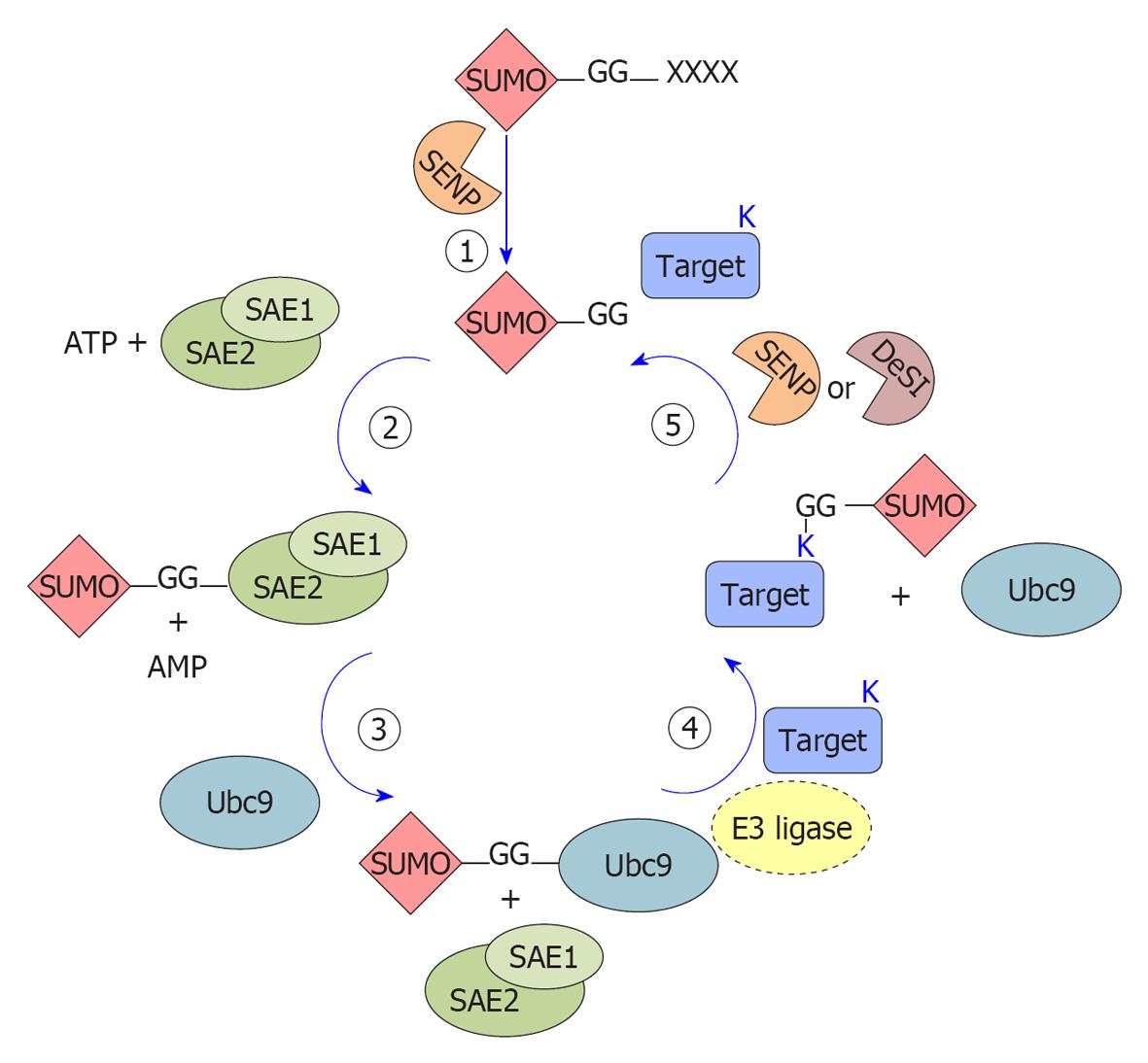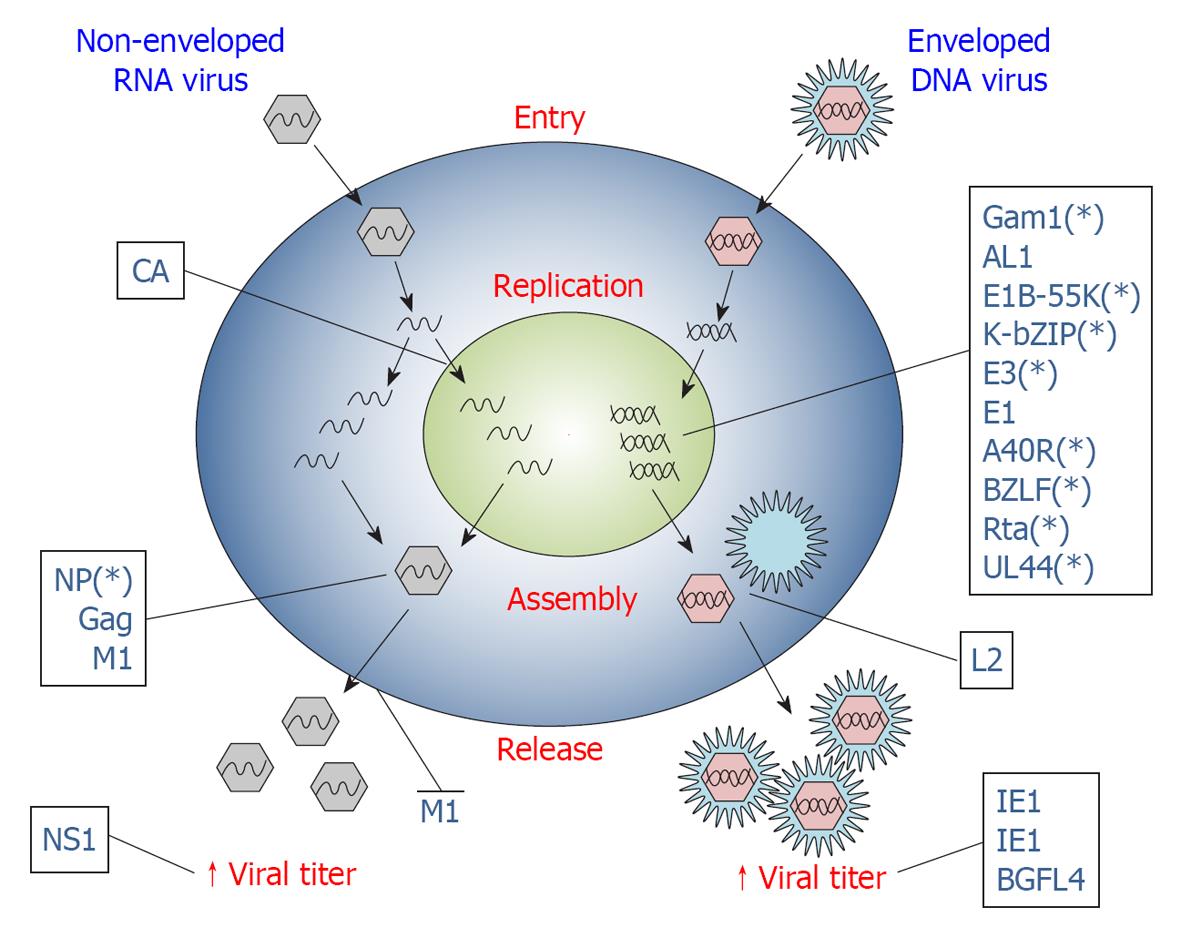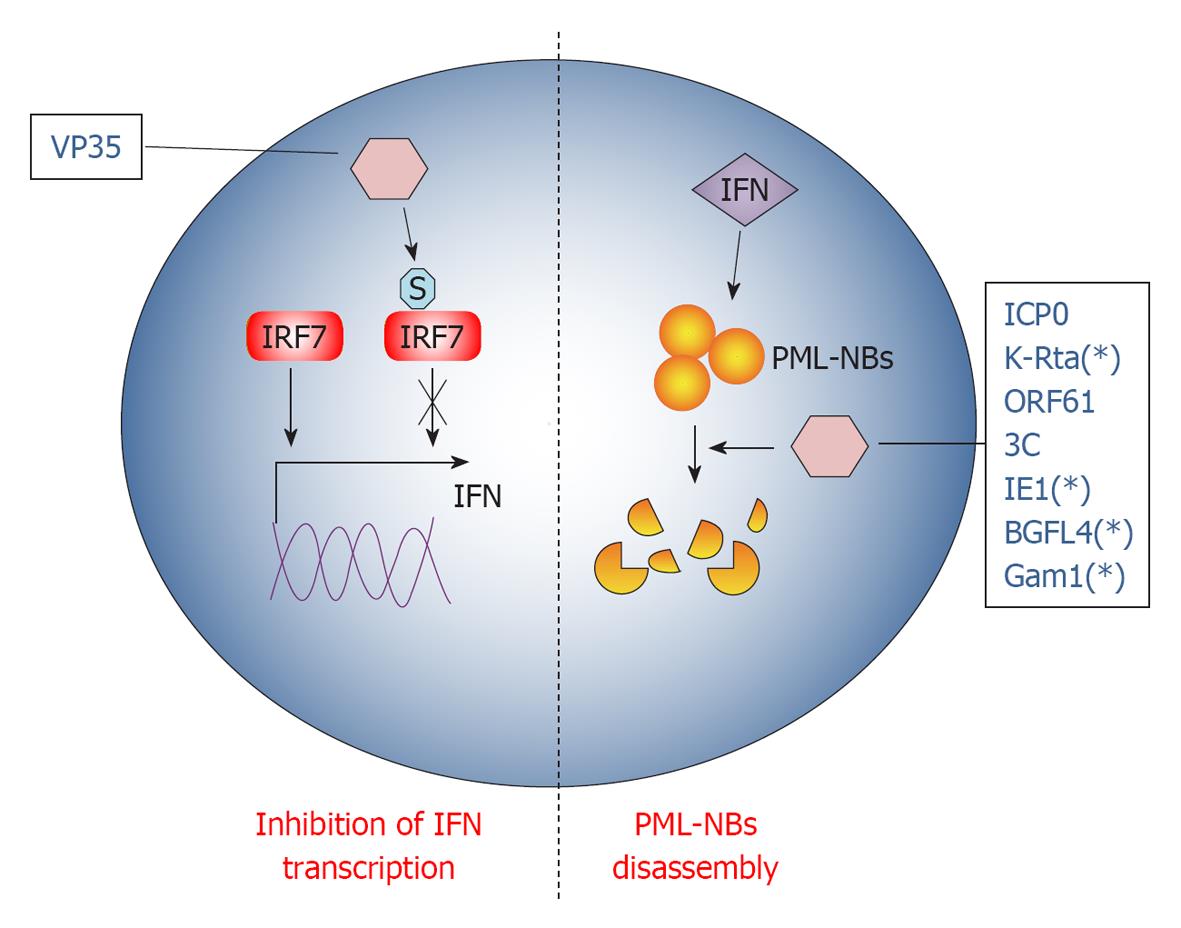Copyright
©2013 Baishideng.
Figure 1 Schematic representation of the small ubiquitin-like modifier conjugation enzymatic cascade.
The cartoon schematically represents the enzymatic steps of small ubiquitin-like modifier (SUMO) protein conjugation on lysines of substrate proteins. 1: SUMO protein precursors are processed by SUMO proteases (SENP) that remove the C-terminal tetrapeptide (X) and free the diglycine motif (-GG); 2: The mature form of SUMO is activated by adenylation at the C-terminal diglycine motif by the E1 enzyme (the SUMO activating enzyme, SAE1-SAE2 or AOS1-UBA2) promoting a thioester bond with a conserved Cys of the E1 enzyme; 3: SUMO is then transferred to a Cys on the E2 conjugating enzyme (Ubc9) forming an E2-SUMO thioester; 4: An isopeptide bond is formed between the diglycine motif of SUMO and a lysine (K) residue in the substrate. E3 ligases are dispensable in vitro but most likely required in vivo; 5: SUMO proteins are removed from substrates by the action of SUMO proteases (SENPs) or DeSumoylating-isopeptidase (DeSI) and free SUMO proteins are available for another cycle of conjugation.
Figure 2 Viral proteins exploit small ubiquitin-like modifier at different steps of virus lifecycle.
Scheme representing the different stages of viral infection (entry, replication, assembly, release) in host cells. Viral proteins interact with the small ubiquitin-like modifier (SUMO) machinery to promote different steps of viral life cycle, as represented. Viral proteins are designed with their acronym. The asterisk (*) indicates that the marked viral protein has not been formally shown to directly influence viral life cycle by exploiting SUMOylation, but indications of a mechanistic link are known. See text for further details on exploitation of the SUMO machinery by single viral proteins.
Figure 3 Viral proteins exploit small ubiquitin-like modifier to promote immune escape from innate and intrinsic responses.
Schematic representation of the strategies used by viral proteins to counteract host innate and intrinsic responses through small ubiquitin-like modifier (SUMO). Viral proteins are designated with their acronym. S stands for SUMO. The asterisk (*) indicates that the marked viral protein has not been formally shown to directly influence cellular antiviral activity by exploiting SUMOylation, but indications of a mechanistic link are known. See text for further details on exploitation of the SUMO machinery by single viral proteins. IFN: Interferon; IRF: IFN regulatory factor; PML-NBs: ProMyelocyticLeukemia nuclear bodies.
- Citation: Mattoscio D, Segré CV, Chiocca S. Viral manipulation of cellular protein conjugation pathways: The SUMO lesson. World J Virol 2013; 2(2): 79-90
- URL: https://www.wjgnet.com/2220-3249/full/v2/i2/79.htm
- DOI: https://dx.doi.org/10.5501/wjv.v2.i2.79











